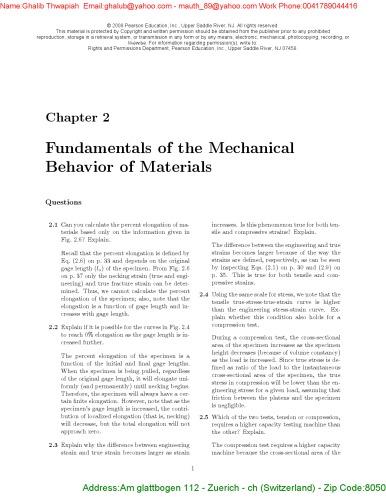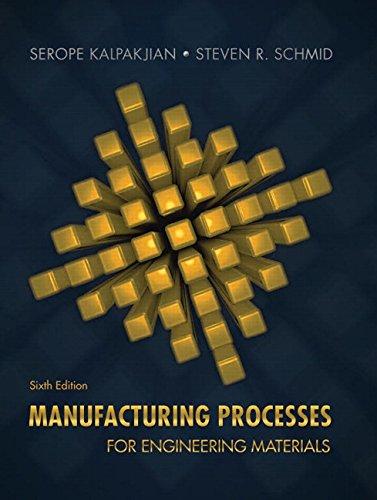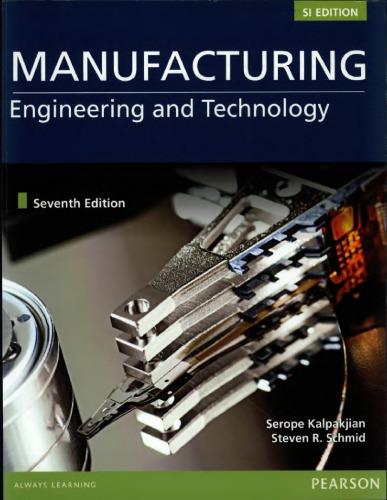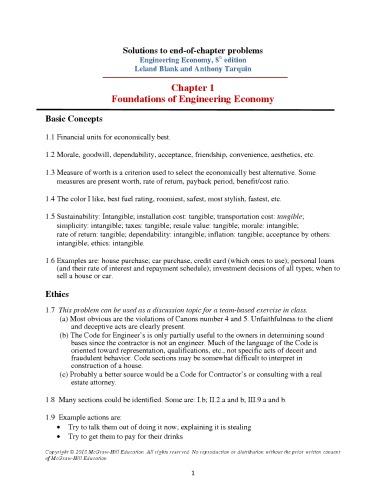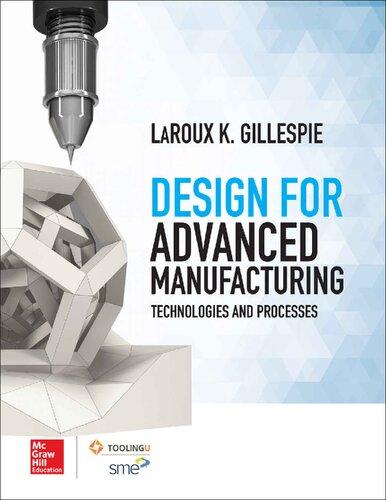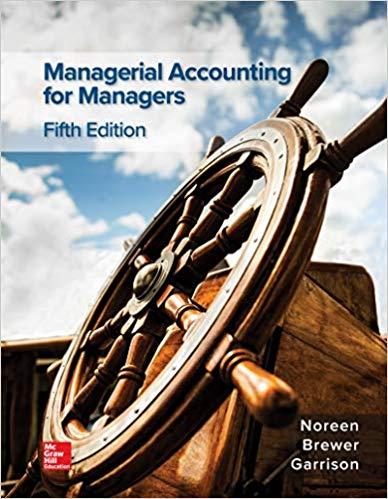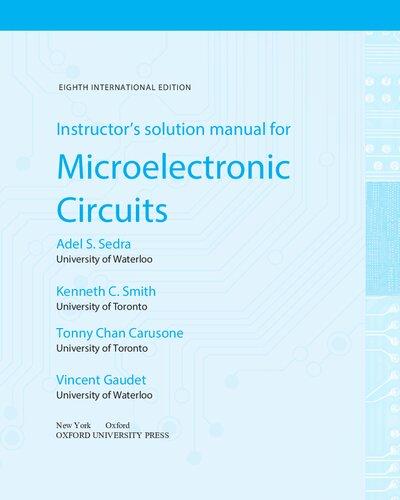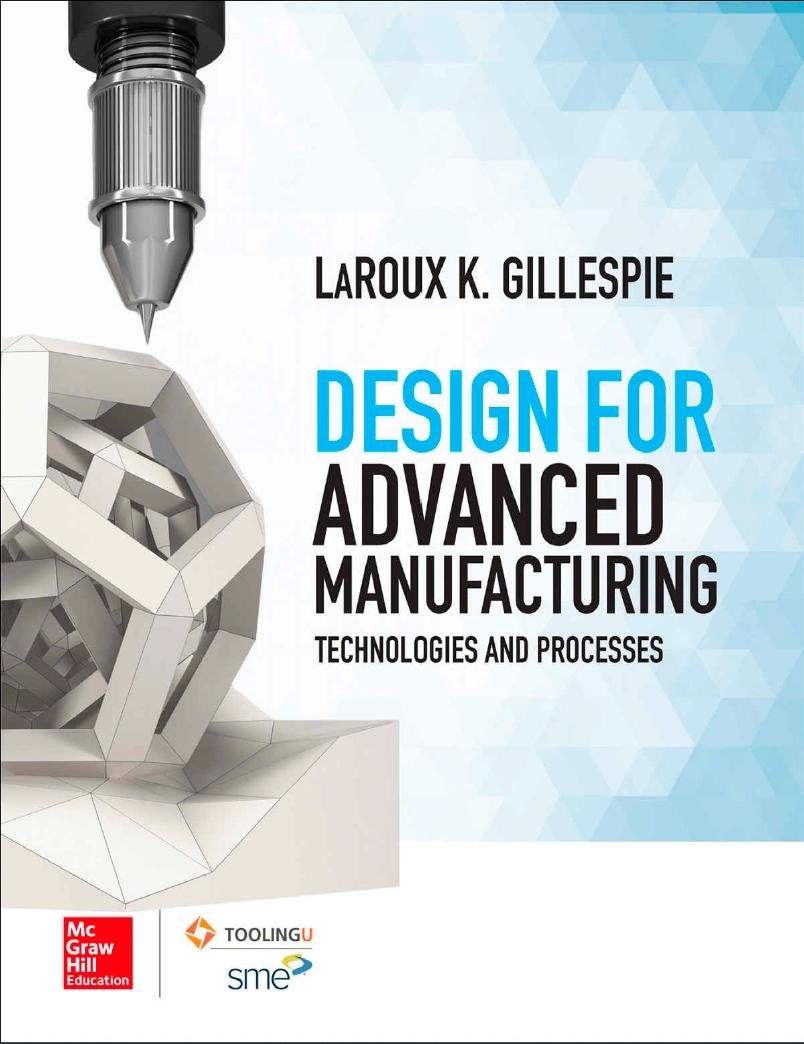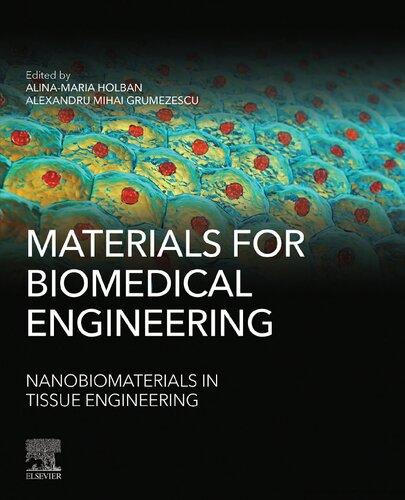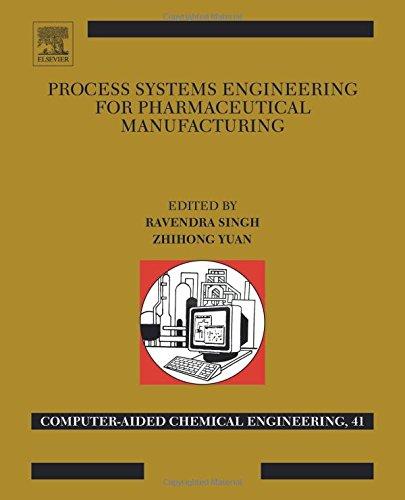FundamentalsoftheMechanical BehaviorofMaterials
Questions
2.1 Canyoucalculatethepercentelongationofmaterialsbasedonlyontheinformationgivenin Fig.2.6?Explain.
Recallthatthepercentelongationisdefinedby Eq.(2.6)onp.33anddependsontheoriginal gagelength(lo)ofthespecimen.FromFig.2.6 onp.37onlytheneckingstrain(trueandengineering)andtruefracturestraincanbedetermined.Thus,wecannotcalculatethepercent elongationofthespecimen;also,notethatthe elongationisafunctionofgagelengthandincreaseswithgagelength.
2.2 ExplainifitispossibleforthecurvesinFig.2.4 toreach0%elongationasthegagelengthisincreasedfurther.
Thepercentelongationofthespecimenisa functionoftheinitialandfinalgagelengths. Whenthespecimenisbeingpulled,regardless oftheoriginalgagelength,itwillelongateuniformly(andpermanently)untilneckingbegins. Therefore,thespecimenwillalwayshaveacertainfiniteelongation.However,notethatasthe specimen’sgagelengthisincreased,thecontributionoflocalizedelongation(thatis,necking) willdecrease,butthetotalelongationwillnot approachzero.
2.3 Explainwhythedifferencebetweenengineering strainandtruestrainbecomeslargerasstrain
increases.Isthisphenomenontrueforbothtensileandcompressivestrains?Explain.
Thedifferencebetweentheengineeringandtrue strainsbecomeslargerbecauseofthewaythe strainsaredefined,respectively,ascanbeseen byinspectingEqs.(2.1)onp.30and(2.9)on p.35.Thisistrueforbothtensileandcompressivestrains.
2.4 Usingthesamescaleforstress,wenotethatthe tensiletrue-stress-true-straincurveishigher thantheengineeringstress-straincurve.Explainwhetherthisconditionalsoholdsfora compressiontest.
Duringacompressiontest,thecross-sectional areaofthespecimenincreasesasthespecimen heightdecreases(becauseofvolumeconstancy) astheloadisincreased.Sincetruestressisdefinedasratiooftheloadtotheinstantaneous cross-sectionalareaofthespecimen,thetrue stressincompressionwillbelowerthantheengineeringstressforagivenload,assumingthat frictionbetweentheplatensandthespecimen isnegligible.
2.5 Whichofthetwotests,tensionorcompression, requiresahighercapacitytestingmachinethan theother?Explain.
Thecompressiontestrequiresahighercapacity machinebecausethecross-sectionalareaofthe
© 2008 Pearson Education, Inc., Upper Saddle River, NJ. All rights reserved. This material is protected by Copyright and written permission should be obtained from the publisher prior to any prohibited reproduction, storage in a retrieval system, or transmission in any form or by any means, electronic, mechanical, photocopying, recording, or likewise. For information regarding permission(s), write to: Rights and Permissions Department, Pearson Education, Inc., Upper Saddle River, NJ 07458.
specimenincreasesduringthetest,whichisthe oppositeofatensiontest.Theincreaseinarea requiresaloadhigherthanthatforthetensiontesttoachievethesamestresslevel.Furthermore,notethatcompression-testspecimens generallyhavealargeroriginalcross-sectional areathanthosefortensiontests,thusrequiring higherforces.
2.6 Explainhowthemodulusofresilienceofamaterialchanges,ifatall,asitisstrained:(1)for anelastic,perfectlyplasticmaterial,and(2)for anelastic,linearlystrain-hardeningmaterial.
2.7 Ifyoupullandbreakatension-testspecimen rapidly,wherewouldthetemperaturebethe highest?Explainwhy.
Sincetemperatureriseisduetotheworkinput, thetemperaturewillbehighestinthenecked regionbecausethatiswherethestrain,hence theenergydissipatedperunitvolumeinplastic deformation,ishighest.
2.8 Commentonthetemperaturedistributionifthe specimeninQuestion2.7ispulledveryslowly.
Ifthespecimenispulledveryslowly,thetemperaturegeneratedwillbedissipatedthroughoutthespecimenandtotheenvironment. Thus,therewillbenoappreciabletemperature riseanywhere,particularlywithmaterialswith highthermalconductivity.
2.9 Inatensiontest,theareaunderthetrue-stresstrue-straincurveistheworkdoneperunitvolume(thespecificwork).Wealsoknowthat theareaundertheload-elongationcurverepresentstheworkdoneonthespecimen.Ifyou dividethislatterworkbythevolumeofthe specimenbetweenthegagemarks,youwilldeterminetheworkdoneperunitvolume(assumingthatalldeformationisconfinedbetween thegagemarks).Willthisspecificworkbe thesameastheareaunderthetrue-stress-truestraincurve?Explain.Willyouranswerbethe sameforanyvalueofstrain?Explain.
Ifwedividetheworkdonebythetotalvolume ofthespecimenbetweenthegagelengths,we obtaintheaveragespecificworkthroughoutthe specimen.However,theareaunderthetrue
stress-truestraincurverepresentsthespecific workdoneatthenecked(andfractured)region inthespecimenwherethestrainisamaximum. Thus,theanswerswillbedifferent.However, uptotheonsetofnecking(instability),thespecificworkcalculatedwillbethesame.Thisis becausethestrainisuniformthroughoutthe specimenuntilneckingbegins.
2.10 ThenoteatthebottomofTable2.5statesthat astemperatureincreases, C decreasesand m increases.Explainwhy.
Thevalueof C inTable2.5onp.43decreases withtemperaturebecauseitisameasureofthe strengthofthematerial.Thevalueof m increaseswithtemperaturebecausethematerial becomesmorestrain-ratesensitive,duetothe factthatthehigherthestrainrate,thelesstime thematerialhastorecoverandrecrystallize, henceitsstrengthincreases.
2.11 Youaregiventhe K and n valuesoftwodifferentmaterials.Isthisinformationsufficient todeterminewhichmaterialistougher?Ifnot, whatadditionalinformationdoyouneed,and why?
Althoughthe K and n valuesmaygiveagood estimateoftoughness,thetruefracturestress andthetruestrainatfracturearerequiredfor accuratecalculationoftoughness.Themodulusofelasticityandyieldstresswouldprovide informationabouttheareaundertheelasticregion;however,thisregionisverysmallandis thususuallynegligiblewithrespecttotherest ofthestress-straincurve.
2.12 ModifythecurvesinFig.2.7toindicatethe effectsoftemperature.Explainthereasonsfor yourchanges.
Thesemodificationscanbemadebylowering theslopeoftheelasticregionandloweringthe generalheightofthecurves.See,forexample, Fig.2.10onp.42.
2.13 Usingaspecificexample,showwhythedeformationrate,sayinm/s,andthetruestrainrate arenotthesame.
Thedeformationrateisthequantity v in Eqs.(2.14),(2.15),(2.17),and(2.18)onpp.4146.Thus,when v isheldconstantduringde-
Hardnesstestsmainlyhavethreedifferences: (a) typeofindenter, (b) appliedload,and (c) methodofindentationmeasurement (depthorsurfaceareaofindentation,or reboundofindenter). 3 © 2008 Pearson Education, Inc., Upper Saddle River, NJ. All rights reserved. This material is protected by Copyright and written permission should be obtained from the publisher prior to any prohibited reproduction, storage in a retrieval system, or transmission in any form or by any means, electronic, mechanical, photocopying, recording, or likewise. For information regarding permission(s), write to: Rights and Permissions Department, Pearson Education, Inc., Upper Saddle River, NJ 07458.
formation(henceaconstantdeformationrate), thetruestrainratewillvary,whereastheengineeringstrainratewillremainconstant.Hence, thetwoquantitiesarenotthesame.
2.14 Ithasbeenstatedthatthehigherthevalueof m,themorediffusetheneckis,andlikewise, thelowerthevalueof m,themorelocalizedthe neckis.Explainthereasonforthisbehavior.
AsdiscussedinSection2.2.7startingonp.41, withhigh m values,thematerialstretchesto agreaterlengthbeforeitfails;thisbehavior isanindicationthatneckingisdelayedwith increasing m.Whenneckingisabouttobegin,theneckingregion’sstrengthwithrespect totherestofthespecimenincreases,dueto strainhardening.However,thestrainratein theneckingregionisalsohigherthanintherest ofthespecimen,becausethematerialiselongatingfasterthere.Sincethematerialinthe neckedregionbecomesstrongerasitisstrained atahigherrate,theregionexhibitsagreaterresistancetonecking.Theincreaseinresistance toneckingthusdependsonthemagnitudeof m.Asthetensiontestprogresses,neckingbecomesmore diffuse,andthespecimenbecomes longerbeforefracture;hence,totalelongation increaseswithincreasingvaluesof m (Fig.2.13 onp.45).Asexpected,theelongationafter necking(postuniformelongation)alsoincreases withincreasing m.Ithasbeenobservedthat thevalueof m decreaseswithmetalsofincreasingstrength.
2.15 Explainwhymaterialswithhigh m values(such ashotglassandsillyputty)whenstretched slowly,undergolargeelongationsbeforefailure. Considereventstakingplaceintheneckedregionofthespecimen.
TheanswerissimilartoAnswer2.14above.
2.16 Assumethatyouarerunningfour-pointbendingtestsonanumberofidenticalspecimensof thesamelengthandcross-section,butwithincreasingdistancebetweentheupperpointsof loading(seeFig.2.21b).Whatchanges,ifany, wouldyouexpectinthetestresults?Explain.
Asthedistancebetweentheupperpointsof loadinginFig.2.21bonp.51increases,the magnitudeofthebendingmomentdecreases.
However,thevolumeofmaterialsubjectedto themaximumbendingmoment(hencetomaximumstress)increases.Thus,theprobability offailureinthefour-pointtestincreasesasthis distanceincreases.
2.17 WouldEq.(2.10)holdtrueintheelasticrange? Explain.
Notethatthisequationisbasedonvolumeconstancy,i.e., Aolo = Al.Weknow,however,that becausethePoisson’sratio ν islessthan0.5in theelasticrange,thevolumeisnotconstantin atensiontest;seeEq.(2.47)onp.69.Therefore,theexpressionisnotvalidintheelastic range.
2.18 Whyhavedifferenttypesofhardnesstestsbeen developed?Howwouldyoumeasurethehardnessofaverylargeobject?
Thereareseveralbasicreasons:(a)Theoverall hardnessrangeofthematerials;(b)thehardnessoftheirconstituents;seeChapter3;(c)the thicknessofthespecimen,suchasbulkversus foil;(d)thesizeofthespecimenwithrespectto thatoftheindenter;and(e)thesurfacefinish ofthepartbeingtested.
2.19 Whichhardnesstestsandscaleswouldyouuse forverythinstripsofmaterial,suchasaluminumfoil?Why?
Becausealuminumfoilisverythin,theindentationsonthesurfacemustbeverysmallsoasnot toaffecttestresults.Suitabletestswouldbea microhardnesstestsuchasKnooporVickers underverylightloads(seeFig.2.22onp.52). Theaccuracyofthetestcanbevalidatedbyobservinganychangesinthesurfaceappearance oppositetotheindentedside.
2.20 Listandexplainthefactorsthatyouwouldconsiderinselectinganappropriatehardnesstest andscaleforaparticularapplication.
© 2008 Pearson Education, Inc., Upper Saddle River, NJ. All rights reserved. This material is protected by Copyright and written permission should be obtained from the publisher prior to any prohibited reproduction, storage in a retrieval system, or transmission in any form or by any means, electronic, mechanical, photocopying, recording, or likewise. For information regarding permission(s), write to: Rights and Permissions Department, Pearson Education, Inc., Upper Saddle River, NJ 07458.
Thehardnesstestselectedwoulddependonthe estimatedhardnessoftheworkpiece,itssize andthickness,andifanaveragehardnessorthe hardnessofindividualmicrostructuralcomponentsisdesired.Forinstance,thescleroscope, whichisportable,iscapableofmeasuringthe hardnessoflargepieceswhichotherwisewould bedifficultorimpossibletomeasurebyother techniques.
TheBrinellhardnessmeasurementleavesa fairlylargeindentationwhichprovidesagood measureofaveragehardness,whiletheKnoop testleavesasmallindentationthatallows,for example,thedeterminationofthehardnessof individualphasesinatwo-phasealloy,aswellas inclusions.ThesmallindentationoftheKnoop testalsoallowsittobeusefulinmeasuringthe hardnessofverythinlayersonparts,suchas platingorcoatings.Recallthatthedepthofindentationshouldbesmallrelativetopartthickness,andthatanychangeonthebottomsurfaceappearancemakesthetestresultsinvalid.
2.21 InaBrinellhardnesstest,theresultingimpressionisfoundtobeanellipse.Givepossible explanationsforthisphenomenon.
Thereareseveralpossiblereasonsforthis phenomenon,butthetwomostlikelyare anisotropyinthematerialandthepresenceof surfaceresidualstressesinthematerial.
2.21 ReferringtoFig.2.22onp.52,notethatthe materialforindentersareeithersteel,tungsten carbide,ordiamond.Whyisn’tdiamondused forallofthetests?
Whilediamondisthehardestmaterialknown, itwouldnot,forexample,bepracticaltomake andusea10-mmdiamondindenterbecausethe costswouldbeprohibitive.Consequently,a hardmaterialsuchasthoselistedaresufficient formosthardnesstests.
2.22 Whateffect,ifany,doesfrictionhaveinahardnesstest?Explain.
Theeffectoffrictionhasbeenfoundtobeminimal.Inahardnesstest,mostoftheindentation occursthroughplasticdeformation,andthere isverylittleslidingattheindenter-workpiece interface;seeFig.2.25onp.55.
2.23 Describethedifferencebetweencreepand stress-relaxationphenomena,givingtwoexamplesforeachastheyrelatetoengineeringapplications.
Creepisthepermanentdeformationofapart thatisunderaloadoveraperiodoftime,usuallyoccurringatelevatedtemperatures.Stress relaxationisthedecreaseinthestresslevelin apartunderaconstantstrain.Examplesof creepinclude:
(a) turbinebladesoperatingathightemperatures,and
(b) high-temperaturesteamlinesandfurnace components.
Stressrelaxationisobservedwhen,forexample, arubberbandorathermoplasticispulledto aspecificlengthandheldatthatlengthfora periodoftime.Thisphenomenoniscommonly observedinrivets,bolts,andguywires,aswell asthermoplasticcomponents.
2.24 Referringtothetwoimpacttestsshownin Fig.2.31,explainhowdifferenttheresults wouldbeifthespecimenswereimpactedfrom theoppositedirections.
Notethatimpactingthespecimensshownin Fig.2.31onp.60fromtheoppositedirections wouldsubjecttherootsofthenotchestocompressivestresses,andthustheywouldnotact asstressraisers.Thus,crackswouldnotpropagateastheywouldwhenundertensilestresses. Consequently,thespecimenswouldbasically behaveasiftheywerenotnotched.
2.25 Ifyouremovelayer ad fromthepartshownin Fig.2.30d,suchasbymachiningorgrinding, whichwaywillthespecimencurve?(Hint: Assumethatthepartindiagram(d)canbemodeledasconsistingoffourhorizontalspringsheld attheends.Thus,fromthetopdown,wehave compression,tension,compression,andtension springs.)
Sincetheinternalforceswillhavetoachievea stateofstaticequilibrium,thenewparthasto bowdownward(i.e.,itwillholdwater).Such residual-stresspatternscanbemodeledwith asetofhorizontaltensionandcompression
© 2008 Pearson Education, Inc., Upper Saddle River, NJ. All rights reserved. This material is protected by Copyright and written permission should be obtained from the publisher prior to any prohibited reproduction, storage in a retrieval system, or transmission in any form or by any means, electronic, mechanical, photocopying, recording, or likewise. For information regarding permission(s), write to: Rights and Permissions Department, Pearson Education, Inc., Upper Saddle River, NJ 07458.
springs.Notethatthetoplayerofthematerial ad inFig.2.30donp.60,whichisunder compression,hasthetendencytobendthebar upward.Whenthisstressisrelieved(suchas byremovingalayer),thebarwillcompensate foritbybendingdownward.
2.26 Isitpossibletocompletelyremoveresidual stressesinapieceofmaterialbythetechnique describedinFig.2.32ifthematerialiselastic, linearlystrainhardening?Explain.
Byfollowingthesequenceofeventsdepicted inFig.2.32onp.61,itcanbeseenthatitis notpossibletocompletelyremovetheresidual stresses.Notethatforanelastic,linearlystrain hardeningmaterial, σc willnevercatchupwith σt.
2.27 ReferringtoFig.2.32,woulditbepossibleto eliminateresidualstressesbycompressioninsteadoftension?Assumethatthepieceofmaterialwillnotbuckleundertheuniaxialcompressiveforce.
Yes,bythesamemechanismdescribedin Fig.2.32onp.61.
2.28 Listandexplainthedesirablemechanicalpropertiesforthefollowing:(1)elevatorcable,(2) bandage,(3)shoesole,(4)fishhook,(5)automotivepiston,(6)boatpropeller,(7)gasturbineblade,and(8)staple.
Thefollowingaresomebasicconsiderations:
(a) Elevatorcable:Thecableshouldnotelongateelasticallytoalargeextentorundergoyieldingastheloadisincreased. Theserequirementsthuscallforamaterialwithahighelasticmodulusandyield stress.
(b) Bandage:Thebandagematerialmustbe compliant,thatis,havealowstiffness,but havehighstrengthinthemembranedirection.Itsinnersurfacemustbepermeable andoutersurfaceresistanttoenvironmentaleffects.
(c) Shoesole:Thesoleshouldbecompliant forcomfort,withahighresilience.It shouldbetoughsothatitabsorbsshock andshouldhavehighfrictionandwearresistance.
(d) Fishhook:Afishhookneedstohavehigh strengthsothatitdoesn’tdeformpermanentlyunderload,andthusmaintainits shape.Itshouldbestiff(forbettercontrolduringitsuse)andshouldberesistant theenvironmentitisusedin(suchassalt water).
(e) Automotivepiston:Thisproductmust havehighstrengthatelevatedtemperatures,highphysicalandthermalshockresistance,andlowmass.
(f) Boatpropeller:Thematerialmustbe stiff(tomaintainitsshape)andresistant tocorrosion,andalsohaveabrasionresistancebecausethepropellerencounters sandandotherabrasiveparticleswhenoperatedclosetoshore.
(g) Gasturbineblade:Agasturbinebladeoperatesathightemperatures(dependingon itslocationintheturbine);thusitshould havehigh-temperaturestrengthandresistancetocreep,aswellastooxidationand corrosionduetocombustionproductsduringitsuse.
(h) Staple:Thepropertiesshouldbeclosely paralleltothatofapaperclip.Thestaple shouldhavehighductilitytoallowittobe deformedwithoutfracture,andalsohave lowyieldstresssothatitcanbebent(as wellasunbentwhenremovingit)easily withoutrequiringexcessiveforce.
2.29 MakeasketchshowingthenatureanddistributionoftheresidualstressesinFigs.2.31aandb beforethepartsweresplit(cut).Assumethat thesplitpartsarefreefromanystresses.(Hint: Forcethesepartsbacktotheshapetheywere inbeforetheywerecut.)
Asthequestionstates,whenweforcebackthe splitportionsinthespecimeninFig.2.31a onp.60,weinducetensilestressesonthe outersurfacesandcompressiveontheinner. Thustheoriginalpartwould,alongitstotal crosssection,havearesidualstressdistributionoftension-compression-tension.Usingthe sametechnique,wefindthatthespecimenin Fig.2.31bwouldhaveasimilarresidualstress distributionpriortocutting.
2.30 Itispossibletocalculatetheworkofplastic deformationbymeasuringthetemperaturerise
© 2008 Pearson Education, Inc., Upper Saddle River, NJ. All rights reserved. This material is protected by Copyright and written permission should be obtained from the publisher prior to any prohibited reproduction, storage in a retrieval system, or transmission in any form or by any means, electronic, mechanical, photocopying, recording, or likewise. For information regarding permission(s), write to: Rights and Permissions Department, Pearson Education, Inc., Upper Saddle River, NJ 07458.
inaworkpiece,assumingthatthereisnoheat lossandthatthetemperaturedistributionis uniformthroughout.Ifthespecificheatofthe materialdecreaseswithincreasingtemperature, willtheworkofdeformationcalculatedusing thespecificheatatroomtemperaturebehigher orlowerthantheactualworkdone?Explain.
Ifwecalculatetheheatusingaconstantspecific heatvalueinEq.(2.65)onp.73,theworkwill behigherthanitactuallyis.Thisisbecause, bydefinition,asthespecificheatdecreases,less workisrequiredtoraisetheworkpiecetemperaturebyonedegree.Consequently,thecalculatedworkwillbehigherthantheactualwork done.
2.31 Explainwhetherornotthevolumeofametal specimenchangeswhenthespecimenissubjectedtoastateof(a)uniaxialcompressive stressand(b)uniaxialtensilestress,allinthe elasticrange.
Forcase(a),thequantityinparenthesesin Eq.(2.47)onp.69willbenegative,because ofthecompressivestress.Sincetherestofthe termsarepositive,theproductofthesetermsis negativeand,hence,therewillbeadecreasein volume(Thiscanalsobededucedintuitively.) Forcase(b),itwillbenotedthatthevolume willincrease.
2.32 Weknowthatitisrelativelyeasytosubject aspecimentohydrostaticcompression,suchas byusingachamberfilledwithaliquid.Devisea meanswherebythespecimen(say,intheshape ofacubeorathinrounddisk)canbesubjected tohydrostatictension,oroneapproachingthis stateofstress.(Notethatathin-walled,internallypressurizedsphericalshellisnotacorrect answer,becauseitissubjectedonlytoastate ofplanestress.)
Twopossibleanswersarethefollowing:
(a) Asolidcubemadeofasoftmetalhasallits sixfacesbrazedtolongsquarebars(ofthe samecrosssectionasthespecimen);the barsaremadeofastrongermetal.Thesix armsarethensubjectedtoequaltension forces,thussubjectingthecubetoequal tensilestresses.
(b) Athin,solidrounddisk(suchasacoin) andmadeofasoftmaterialisbrazedbetweentheendsoftwosolidroundbars ofthesamediameterasthatofthedisk. Whensubjectedtolongitudinaltension, thediskwilltendtoshrinkradially.But becauseitisthinanditsflatsurfacesare restrainedbythetworodsfrommoving, thediskwillbesubjectedtotensileradial stresses.Thus,astateoftriaxial(though notexactlyhydrostatic)tensionwillexist withinthethindisk.
2.33 ReferringtoFig.2.19,makesketchesofthe stateofstressforanelementinthereduced sectionofthetubewhenitissubjectedto(1) torsiononly,(2)torsionwhilethetubeisinternallypressurized,and(3)torsionwhilethe tubeisexternallypressurized.Assumethatthe tubeisclosedend.
Thesestatesofstresscanberepresentedsimply byreferringtothecontentsofthischapteras wellastherelevantmaterialscoveredintexts onmechanicsofsolids.
2.34 Apenny-shapedpieceofsoftmetalisbrazed totheendsoftwoflat,roundsteelrodsofthe samediameterasthepiece.Theassemblyis thensubjectedtouniaxialtension.Whatisthe stateofstresstowhichthesoftmetalissubjected?Explain.
Thepenny-shapedsoftmetalpiecewilltend tocontractradiallyduetothePoisson’sratio; however,thesolidrodstowhichitattachedwill preventthisfromhappening.Consequently,the stateofstresswilltendtoapproachthatofhydrostatictension.
2.35 Acirculardiskofsoftmetalisbeingcompressedbetweentwoflat,hardenedcircular steelpuncheshavingthesamediameterasthe disk.Assumethatthediskmaterialisperfectly plasticandthatthereisnofrictionoranytemperatureeffects.Explainthechange,ifany,in themagnitudeofthepunchforceasthediskis beingcompressedplasticallyto,say,afraction ofitsoriginalthickness.
Notethatasitiscompressedplastically,the diskwillexpandradially,becauseofvolume constancy.Anapproximatelydonut-shaped
© 2008 Pearson Education, Inc., Upper Saddle River, NJ. All rights reserved. This material is protected by Copyright and written permission should be obtained from the publisher prior to any prohibited reproduction, storage in a retrieval system, or transmission in any form or by any means, electronic, mechanical, photocopying, recording, or likewise. For information regarding permission(s), write to: Rights and Permissions Department, Pearson Education, Inc., Upper Saddle River, NJ 07458.
materialwillthenbepushedradiallyoutward,whichwillthenexertradialcompressive stressesonthediskvolumeunderthepunches. Thevolumeofmaterialdirectlybetweenthe puncheswillnowsubjectedtoatriaxialcompressivestateofstress.Accordingtoyieldcriteria(seeSection2.11),thecompressivestress exertedbythepuncheswillthusincrease,even thoughthematerialisnotstrainhardening. Therefore,thepunchforcewillincreaseasdeformationincreases.
2.36 Aperfectlyplasticmetalisyieldingunderthe stressstate σ1, σ2, σ3,where σ1 >σ2 >σ3 Explainwhathappensif σ1 isincreased.
ConsiderFig.2.36onp.67.Pointsintheinterioroftheyieldlocusareinanelasticstate, whereasthoseontheyieldlocusareinaplasticstate.Pointsoutsidetheyieldlocusarenot admissible.Therefore,anincreasein σ1 while theotherstressesremainunchangedwouldrequireanincreaseinyieldstress.Thiscanalso bededucedbyinspectingeitherEq.(2.36)or Eq.(2.37)onp.64.
2.37 WhatisthedilatationofamaterialwithaPoisson’sratioof0.5?Isitpossibleforamaterialto haveaPoisson’sratioof0.7?Givearationale foryouranswer.
ItcanbeseenfromEq.(2.47)onp.69thatthe dilatationofamaterialwith ν =0.5isalways zero,regardlessofthestressstate.Toexamine thecaseof ν =0.7,considerthesituationwhere thestressstateishydrostatictension.Equation (2.47)wouldthenpredictcontractionundera tensilestress,asituationthatcannotoccur.
2.38 CanamaterialhaveanegativePoisson’sratio? Explain.
SolidmaterialdonothaveanegativePoisson’s ratio,withtheexceptionofsomecompositematerials(seeChapter10),wheretherecanbea negativePoisson’sratioinagivendirection.
2.39 Asclearlyaspossible,defineplanestressand planestrain.
Planestressisthesituationwherethestresses inoneofthedirectiononanelementarezero; planestrainisthesituationwherethestrains inoneofthedirectionarezero.
2.40 Whattestwouldyouusetoevaluatethehardnessofacoatingonametalsurface?Wouldit matterifthecoatingwasharderorsofterthan thesubstrate?Explain.
Theanswerdependsonwhetherthecoatingis relativelythinorthick.Forarelativelythick coating,conventionalhardnesstestscanbeconducted,aslongasthedeformedregionunder theindenterislessthanaboutone-tenthof thecoatingthickness.Ifthecoatingthickness islessthanthisthreshold,thenonemusteitherrelyonnontraditionalhardnesstests,or elseusefairlycomplicatedindentationmodels toextractthematerialbehavior.Asanexampleoftheformer,atomicforcemicroscopesusingdiamond-tippedpyramidshavebeenusedto measurethehardnessofcoatingslessthan100 nanometersthick.Asanexampleofthelatter,finite-elementmodelsofacoatedsubstrate beingindentedbyanindenterofaknowngeometrycanbedevelopedandthencorrelated toexperiments.
2.41 Listtheadvantagesandlimitationsofthe stress-strainrelationshipsgiveninFig.2.7.
Severalanswersthatareacceptable,andthe studentisencouragedtodevelopasmanyas possible.Twopossibleanswersare:(1)there isatradeoffbetweenmathematicalcomplexityandaccuracyinmodelingmaterialbehavior and(2)somematerialsmaybebettersuitedfor certainconstitutivelawsthanothers.
2.42 PlotthedatainTable2.1onabarchart,showingtherangeofvalues,andcommentonthe results. Bythestudent.Anexampleofabarchartfor theelasticmodulusisshownbelow.
© 2008 Pearson Education, Inc., Upper Saddle River, NJ. All rights reserved. This material is protected by Copyright and written permission should be obtained from the publisher prior to any prohibited reproduction, storage in a retrieval system, or transmission in any form or by any means, electronic, mechanical, photocopying, recording, or likewise. For information regarding permission(s), write to: Rights and Permissions Department, Pearson Education, Inc., Upper Saddle River, NJ 07458.
thatthehardnessistoohigh,thusthematerialmaynothavesufficientductilityfortheintendedapplication.Thesupplierisreluctantto acceptthereturnofthematerial,insteadclaimingthatthediamondconeusedintheRockwell testingwaswornandblunt,andhencethetest neededtoberecalibrated.Isthisexplanation plausible?Explain.
RefertoFig.2.22onp.52andnotethatifan indenterisblunt,thenthepenetration, t,underagivenloadwillbesmallerthanthatusing asharpindenter.Thisthentranslatesintoa higherhardness.Theexplanationisplausible, butinpractice,hardnesstestsarefairlyreliable andmeasurementsareconsistentifthetesting equipmentisproperlycalibratedandroutinely serviced.
2.44 Explainwhya0.2%offsetisusedtodetermine theyieldstrengthinatensiontest.
Thevalueof0.2%issomewhatarbitraryandis usedtosetsomestandard.Ayieldstress,representingthetransitionpointfromelastictoplasticdeformation,isdifficulttomeasure.This isbecausethestress-straincurveisnotlinearly proportionalaftertheproportionallimit,which canbeashighasone-halftheyieldstrengthin somemetals.Therefore,atransitionfromelastictoplasticbehaviorinastress-straincurveis difficulttodiscern.Theuseofa0.2%offsetis aconvenientwayofconsistentlyinterpretinga yieldpointfromstress-straincurves.
Typicalcommentsregardingsuchachartare:
(a) Thereisasmallerrangeformetalsthan fornon-metals;
(b) Thermoplastics,thermosetsandrubbers areordersofmagnitudelowerthanmetalsandothernon-metals;
(c) Diamondandceramicscanbesuperiorto others,butceramicshavealargerangeof values.
2.43 Ahardnesstestisconductedonas-received metalasaqualitycheck.Theresultsindicate
2.45 ReferringtoQuestion2.44,wouldtheoffsetmethodbenecessaryforahighly-strainedhardenedmaterial?Explain.
The0.2%offsetisstilladvisablewheneverit canbeused,becauseitisastandardizedapproachfordeterminingyieldstress,andthus oneshouldnotarbitrarilyabandonstandards. However,ifthematerialishighlycoldworked, therewillbeamorenoticeable‘kink’inthe stress-straincurve,andthustheyieldstressis farmoreeasilydiscernablethanforthesame materialintheannealedcondition.
© 2008 Pearson Education, Inc., Upper Saddle River, NJ. All rights reserved. This material is protected by Copyright and written permission should be obtained from the publisher prior to any prohibited reproduction, storage in a retrieval system, or transmission in any form or by any means, electronic, mechanical, photocopying, recording, or likewise. For information regarding permission(s), write to: Rights and Permissions Department, Pearson Education, Inc., Upper Saddle River, NJ 07458.
Problems
2.46 Astripofmetalisoriginally1.5mlong.Itis stretchedinthreesteps:firsttoalengthof1.75 m,thento2.0m,andfinallyto3.0m.Show thatthetotaltruestrainisthesumofthetrue strainsineachstep,thatis,thatthestrainsare additive.Showthat,usingengineeringstrains, thestrainforeachstepcannotbeaddedtoobtainthetotalstrain.
ThetruestrainisgivenbyEq.(2.9)onp.35as =ln l lo
Therefore,thetruestrainsforthethreesteps are:
1 =ln 1.75 1.5 =0 1541
2 =ln 2 0 1 75 =0.1335
3 =ln 3 0 2.0 =0 4055
Thesumofthesetruestrainsis =0.1541+ 0.1335+0.4055=0.6931.Thetruestrainfrom step1to3is =ln 3 1 5 =0.6931
Thereforethetruestrainsareadditive.Usingthesameapproachforengineeringstrain asdefinedbyEq.(2.1),weobtain e1 =0 1667, e2 =0 1429,and e3 =0 5.Thesumofthese strainsis e1 +e2 +e3 =0.8096.Theengineering strainfromstep1to3is e = l lo l
Notethatthisisnotequaltothesumofthe engineeringstrainsfortheindividualsteps.
2.47 Apaperclipismadeofwire1.20-mmindiameter.Iftheoriginalmaterialfromwhichthe wireismadeisarod15-mmindiameter,calculatethelongitudinalanddiametricalengineeringandtruestrainsthatthewirehasundergone.
Assumingvolumeconstancy,wemaywrite lf lo = do
Letting l0 beunity,thelongitudinalengineering strainis e1 =(156 1)/1=155.Thediametral engineeringstrainiscalculatedas ed = 1 2 15 15 = 0.92
Thelongitudinaltruestrainisgivenby Eq.(2.9)onp.35as
=ln l lo =ln(155)=5 043
Thediametraltruestrainis d =ln 1 20 15 = 2 526
Notethelargedifferencebetweentheengineeringandtruestrains,eventhoughbothdescribe thesamephenomenon.Notealsothatthesum ofthetruestrains(recognizingthattheradial strainis r =ln 0 60 7 5 = 2 526)inthethree principaldirectionsiszero,indicatingvolume constancyinplasticdeformation.
2.48 Amaterialhasthefollowingproperties:UTS= 50, 000psiand n =0 25Calculateitsstrength coefficient K
LetusfirstnotethatthetrueUTSofthismaterialisgivenbyUTStrue = Knn (becauseat necking = n).Wecanthendeterminethe valueofthisstressfromtheUTSbyfollowingaproceduresimilartoExample2.1.Since n =0 25,wecanwrite
UTStrue =UTS Ao Aneck =UTS e 0 25 =(50, 000)(1 28)=64, 200psi
Therefore,sinceUTStrue = Knn , K = UTStrue nn = 64, 200 0.250 25 =90, 800psi
© 2008 Pearson Education, Inc., Upper Saddle River, NJ. All rights reserved. This material is protected by Copyright and written permission should be obtained from the publisher prior to any prohibited reproduction, storage in a retrieval system, or transmission in any form or by any means, electronic, mechanical, photocopying, recording, or likewise. For information regarding permission(s), write to: Rights and Permissions Department, Pearson Education, Inc., Upper Saddle River, NJ 07458.
2.49 BasedontheinformationgiveninFig.2.6,calculatetheultimatetensilestrengthofannealed 70-30brass.
FromFig.2.6onp.37,thetruestressforannealed70-30brassatnecking(wheretheslope becomesconstant;seeFig.2.7aonp.40)is foundtobeabout60,000psi,whilethetrue strainisabout0.2.Wealsoknowthattheratio oftheoriginaltoneckedareasofthespecimen isgivenby
Ao Aneck =0.20 or
neck
o = e 0 20 =0 819
Thus,
UTS=(60, 000)(0 819)=49, 100psi
2.50 Calculatetheultimatetensilestrength(engineering)ofamaterialwhosestrengthcoefficient is400MPaandofatensile-testspecimenthat necksatatruestrainof0.20.
Inthisproblemwehave K =400MPaand n =0 20.Followingthesameprocedureasin Example2.1,wefindthetrueultimatetensile strengthis
σ =(400)(0.20)0 20 =290MPa and Aneck = Aoe 0 20 =0 81Ao Consequently, UTS=(290)(0 81)=237MPa
2.51 Acableismadeoffourparallelstrandsofdifferentmaterials,allbehavingaccordingtothe equation σ = K n,where n =0.3Thematerials,strengthcoefficients,andcrosssectionsare asfollows:
MaterialA: K =450MPa, Ao =7mm2;
MaterialB: K =600MPa, Ao =2 5mm2;
MaterialC: K =300MPa, Ao =3mm2;
MaterialD: K =760MPa, Ao =2mm2;
(a) Calculatethemaximumtensileloadthat thiscablecanwithstandpriortonecking.
(b) Explainhowyouwouldarriveatananswerifthe n valuesofthethreestrands weredifferentfromeachother.
(a) Neckingwilloccurwhen = n =0.3.At thispointthetruestressesineachcable are(from σ = K n),respectively,
σA =(450)0.30 3 =314MPa
σB =(600)0 30 3 =418MPa
σC =(300)0 30 3 =209MPa
σD =(760)0.30 3 =530MPa
Theareasatneckingarecalculatedasfollows(from Aneck = Aoe n):
AA =(7)e 0 3 =5.18mm2
AB =(2 5)e 0 3 =1 85mm2
AC =(3)e 0 3 =2.22mm2
AD =(2)e 0 3 =1.48mm2
Hencethetotalloadthatthecablecan supportis
P =(314)(5.18)+(418)(1.85) +(209)(2.22)+(530)(1.48) =3650N
(b) Ifthe n valuesofthefourstrandsweredifferent,theprocedurewouldconsistofplottingtheload-elongationcurvesofthefour strandsonthesamechart,thenobtaininggraphicallythemaximumload.Alternately,acomputerprogramcanbewritten todeterminethemaximumload.
2.52 UsingonlyFig.2.6,calculatethemaximum loadintensiontestingofa304stainless-steel roundspecimenwithanoriginaldiameterof0.5 in.
WeobservefromFig.2.6onp.37thatnecking beginsatatruestrainofabout0.1,andthat thetrueUTSisabout110,000psi.Theoriginalcross-sectionalareais Ao = π(0.25in)2 = 0 196in2.Since n =0 1,wefollowaprocedure similartoExample2.1andshowthat
Ao Aneck = e 0 1 =1 1
© 2008 Pearson Education, Inc., Upper Saddle River, NJ. All rights reserved. This material is protected by Copyright and written permission should be obtained from the publisher prior to any prohibited reproduction, storage in a retrieval system, or transmission in any form or by any means, electronic, mechanical, photocopying, recording, or likewise. For information regarding permission(s), write to: Rights and Permissions Department, Pearson Education, Inc., Upper Saddle River, NJ 07458.
Thus
UTS= 110, 000 1 1 =100, 000psi
Hencethemaximumloadis
F =(UTS)(Ao)=(100, 000)(0 196) or F =19, 600lb.
2.53 UsingthedatagiveninTable2.1,calculatethe valuesoftheshearmodulus G forthemetals listedinthetable.
TheimportantequationisEq.(2.24)onp.49 whichgivestheshearmodulusas G = E 2(1+ ν)
Thefollowingvaluescanbecalculated(midrangevaluesof ν aretakenasappropriate):
Material E (GPa) ν G(GPa)
Al&alloys69-790.3226-30
Cu&alloys105-1500.3439-56
Pb&alloys140.434.9
Mg&alloys41-450.3215.5-17.0
Mo&alloys330-3600.32125-136
Ni&alloys180-2140.3169-82
Steels190-2000.3073-77
Stainlesssteels190-2000.2974-77
Ti&alloys80-1300.3230-49
W&alloys350-4000.27138-157
Ceramics70-10000.229-417
Glass70-800.2428-32
Rubbers0.01-0.10.50.0033-0.033
Thermoplastics1.4-3.40.360.51-1.25
Thermosets3.5-170.341.3-6.34
2.54 Deriveanexpressionforthetoughnessofa materialwhosebehaviorisrepresentedbythe equation σ = K ( +0.2)n andwhosefracture strainisdenotedas f .
Recallthattoughnessistheareaunderthe stress-straincurve,hencethetoughnessforthis materialwouldbegivenby
2.55 Acylindricalspecimenmadeofabrittlematerial1in.highandwithadiameterof1in.is subjectedtoacompressiveforcealongitsaxis. Itisfoundthatfracturetakesplaceatanangle of45◦ underaloadof30,000lb.Calculatethe shearstressandthenormalstressactingonthe fracturesurface.
Assumingthatcompressiontakesplacewithout friction,notethattwooftheprincipalstresses willbezero.Thethirdprincipalstressacting onthisspecimenisnormaltothespecimenand itsmagnitudeis σ3 = 30, 000 π(0.5)2 =38, 200psi
TheMohr’scircleforthissituationisshown below.
Thefractureplaneisorientedatanangleof 45◦,correspondingtoarotationof90◦ onthe Mohr’scircle.Thiscorrespondstoastressstate onthefractureplaneof σ = 19, 100psiand τ =19, 100psi.
2.56 Whatisthemodulusofresilienceofahighly cold-workedpieceofsteelwithahardnessof 300HB?Ofapieceofhighlycold-workedcopperwithahardnessof150HB?
ReferringtoFig.2.24onp.55,thevalueof c inEq.(2.29)onp.54isapproximately3.2 forhighlycold-workedsteelsandaround3.4 forcold-workedaluminum.Therefore,wecan approximate c =3 3forcold-workedcopper. However,sincetheBrinellhardnessisinunits ofkg/mm2,fromEq.(2.29)wecanwrite
=133ksi
6ksi
© 2008 Pearson Education, Inc., Upper Saddle River, NJ. All rights reserved. This material is protected by Copyright and written permission should be obtained from the publisher prior to any prohibited reproduction, storage in a retrieval system, or transmission in any form or by any means, electronic, mechanical, photocopying, recording, or likewise. For information regarding permission(s), write to: Rights and Permissions Department, Pearson Education, Inc., Upper Saddle River, NJ 07458.
FromTable2.1, Esteel =30 × 106 psiand ECu =15 × 106 psi.Themodulusofresilience iscalculatedfromEq.(2.5).Forsteel:
ModulusofResilience= Y 2 2E = (133, 000)2 2(30 × 106)
oramodulusofresilienceforsteelof295inlb/in3.Forcopper,
ModulusofResilience= Y 2 2E = (62, 200)2 2(15 × 106)
oramodulusofresilienceforcopperof129inlb/in3
Notethatthesevaluesareslightlydifferentthan thevaluesgiveninthetext;thisisduetothe factthat(a)highlycold-workedmetalssuchas thesehaveamuchhigheryieldstressthanthe annealedmaterialsdescribedinthetext,and (b)arbitrarypropertyvaluesaregiveninthe statementoftheproblem.
2.57 Calculatetheworkdoneinfrictionlesscompressionofasolidcylinder40mmhighand15mm indiametertoareductioninheightof75%for thefollowingmaterials:(1)1100-Oaluminum, (2)annealedcopper,(3)annealed304stainless steel,and(4)70-30brass,annealed.
TheworkdoneiscalculatedfromEq.(2.62)on p.71wherethespecificenergy, u,isobtained fromEq.(2.60).Sincethereductioninheightis 75%,thefinalheightis10mmandtheabsolute valueofthetruestrainis
=ln 40 10 =1 386
K and n areobtainedfromTable2.3asfollows:
Material K (MPa) n 1100-OAl1800.20 Cu,annealed3150.54
304Stainless,annealed13000.30 70-30brass,annealed8950.49
The u valuesarethencalculatedfrom Eq.(2.60).Forexample,for1100-Oaluminum, where K is180MPaand n is0.20, u iscalculatedas
u = K n+1 n +1 = (180)(1.386)1 2 1.2 =222MN/m3
Thevolumeiscalculatedas V = πr2l = π(0.0075)2(0.04)=7.069 × 10 6 m3.Thework doneistheproductofthespecificwork, u,and thevolume, V .Therefore,theresultscanbe tabulatedasfollows. u Work
Material(MN/m3)(Nm) 1100-OAl2221562
Cu,annealed3382391
304Stainless,annealed152910,808 70-30brass,annealed9776908
2.58 Amaterialhasastrengthcoefficient K = 100, 000psiAssumingthatatensile-testspecimenmadefromthismaterialbeginstoneck atatruestrainof0.17,showthattheultimate tensilestrengthofthismaterialis62,400psi.
TheapproachisthesameasinExample2.1. Sincetheneckingstraincorrespondstothe maximumloadandtheneckingstrainforthis materialisgivenas = n =0 17,wehave,as thetrueultimatetensilestrength:
UTStrue =(100, 000)(0.17)0 17 =74, 000psi.
Thecross-sectionalareaattheonsetofnecking isobtainedfrom
ln Ao Aneck = n =0 17
Consequently,
Aneck = Aoe 0 17
andthemaximumload, P ,is
P = σA =(UTStrue)Aoe 0 17 =(74, 000)(0 844)(Ao)=62, 400Ao lb.
SinceUTS= P/Ao,wehaveUTS=62,400psi.
2.59 Atensile-testspecimenismadeofamaterial representedbytheequation σ = K ( + n)n . (a)Determinethetruestrainatwhichnecking willbegin.(b)Showthatitispossibleforan engineeringmaterialtoexhibitthisbehavior.
© 2008 Pearson Education, Inc., Upper Saddle River, NJ. All rights reserved. This material is protected by Copyright and written permission should be obtained from the publisher prior to any prohibited reproduction, storage in a retrieval system, or transmission in any form or by any means, electronic, mechanical, photocopying, recording, or likewise. For information regarding permission(s), write to: Rights and Permissions Department, Pearson Education, Inc., Upper Saddle River, NJ 07458.
(a) InSection2.2.4onp.38wenotedthat instability,hencenecking,requiresthefollowingconditiontobefulfilled:
d = σ
Consequently,forthismaterialwehave Kn ( + n)n 1 = K ( + n)n
Thisissolvedas n =0;thusneckingbeginsassoonasthespecimenissubjected totension.
(b) Yes,thisbehaviorispossible.Consider atension-testspecimenthathasbeen strainedtoneckingandthenunloaded. Uponloadingitagainintension,itwill immediatelybegintoneck.
2.60 Taketwosolidcylindricalspecimensofequaldiameterbutdifferentheights.Assumethatboth specimensarecompressed(frictionless)bythe samepercentreduction,say50%.Provethat thefinaldiameterswillbethesame.
Let’sidentifytheshortercylindricalspecimen withthesubscript s andthetalleroneas t,and theiroriginaldiameteras D.Subscripts f and o indicatefinalandoriginal,respectively.Becausebothspecimensundergothesamepercent reductioninheight,wecanwrite
in2 andtheoriginallengthsare a =8in.and b =4.5in.Thematerialforspecimen a hasa true-stress-true-straincurveof σ =100, 000 0 5 . Plotthetrue-stress-true-straincurvethatthe materialforspecimen b shouldhaveforthebar toremainhorizontalduringtheexperiment.
andfromvolumeconstancy,
and
Because Dto = Dso,wenotefromtheserelationshipsthat Dtf = Dsf .
2.61 Ahorizontalrigidbar c-c issubjectingspecimen a totensionandspecimen b tofrictionlesscompressionsuchthatthebarremainshorizontal. (Seetheaccompanyingfigure.)Theforce F is locatedatadistanceratioof2:1.Bothspecimenshaveanoriginalcross-sectionalareaof1
Fromtheequilibriumofverticalforcesandto keepthebarhorizontal,wenotethat2Fa = Fb Hence,intermsoftruestressesandinstantaneousareas,wehave 2σaAa = σbAb
Fromvolumeconstancywealsohave,interms oforiginalandfinaldimensions
AoaLoa = AaLa and AobLob = AbLb where Loa =(8/4.5)Lob =1.78Lob.Fromthese relationshipswecanshowthat
Since σa = K 0 5 a where K =100, 000psi,we cannowwrite
Hence,foradeflectionof x,
Thetruestraininspecimenbisgivenby b =ln 4 5 x 4.5
Byinspectingthefigureintheproblemstatement,wenotethatwhilespecimen a gets
© 2008 Pearson Education, Inc., Upper Saddle River, NJ. All rights reserved. This material is protected by Copyright and written permission should be obtained from the publisher prior to any prohibited reproduction, storage in a retrieval system, or transmission in any form or by any means, electronic, mechanical, photocopying, recording, or likewise. For information regarding permission(s), write to: Rights and Permissions Department, Pearson Education, Inc., Upper Saddle River, NJ 07458.
longer,itwillcontinueexertingsomeforce Fa However,specimen b willeventuallyacquirea cross-sectionalareathatwillbecomeinfiniteas x approaches4.5in.,thusitsstrengthmust approachzero.Thisobservationsuggeststhat specimen b cannothaveatruestress-truestrain curvetypicalofmetals,andthatitwillhavea maximumatsomestrain.Thisisseeninthe plotof σb shownbelow.
Equation(2.20)isusedtosolvethisproblem. Notingthat σ =500MPa, d =40mm=0.04 m,and t =5mm=0.005m,wecanwrite σ = 2P πdt → P = σπdt 2
Therefore P = (500 × 106)π(0.04)(0.005) 2 =157kN.
2.64 InFig.2.32a,letthetensileandcompressive residualstressesbothbe10,000psiandthe modulusofelasticityofthematerialbe30×106 psi,withamodulusofresilienceof30in.-lb/in3 Iftheoriginallengthindiagram(a)is20in., whatshouldbethestretchedlengthindiagram (b)sothat,whenunloaded,thestripwillbe freeofresidualstresses?
Notethattheyieldstresscanbeobtainedfrom Eq.(2.5)onp.31as
Mod.ofResilience=MR= Y 2 2E
2.62 InspectthecurvethatyouobtainedinProblem 2.61.Doesatypicalstrain-hardeningmaterial behaveinthatmanner?Explain.
BasedonthediscussionsinSection2.2.3startingonp.35,itisobviousthatordinarymetalswouldnotnormallybehaveinthismanner. However,undercertainconditions,thefollowingcouldexplainsuchbehavior:
• Whenspecimen b isheatedtohigherand highertemperaturesasdeformationprogresses,withitsstrengthdecreasingas x is increasedfurtherafterthemaximumvalue ofstress.
• Incompressiontestingofbrittlematerials, suchasceramics,whenthespecimenbeginstofracture.
• Ifthematerialissusceptibletothermal softening,thenitcandisplaysuchbehaviorwithasufficientlyhighstrainrate.
2.63 Inadisktestperformedonaspecimen40-mm indiameterand5mthick,thespecimenfracturesatastressof500MPa.Whatwasthe loadonthediskatfracture?
Thus, Y = 2(MR)E = 2(30)(30 × 106) or Y =42, 430psi.UsingEq.(2.32),thestrain requiredtorelievetheresidualstressis: = σc E + Y E = 10, 000 30 × 106 + 42, 430 30 × 10
Therefore,
Therefore, lf =20.035in.
2.65 Showthatyoucantakeabentbarmadeofan elastic,perfectlyplasticmaterialandstraighten itbystretchingitintotheplasticrange.(Hint: ObservetheeventsshowninFig.2.32.)
Theseriesofeventsthattakesplaceinstraighteningabentbarbystretchingitcanbevisualizedbystartingwithastressdistributionas inFig.2.32aonp.61,whichwouldrepresent theunbendingofabentsection.Asweapply tension,wealgebraicallyaddauniformtensile stresstothisstressdistribution.Notethatthe changeinthestressesisthesameasthatdepictedinFig.2.32d,namely,thetensilestress
© 2008 Pearson Education, Inc., Upper Saddle River, NJ. All rights reserved. This material is protected by Copyright and written permission should be obtained from the publisher prior to any prohibited reproduction, storage in a retrieval system, or transmission in any form or by any means, electronic, mechanical, photocopying, recording, or likewise. For information regarding permission(s), write to: Rights and Permissions Department, Pearson Education, Inc., Upper Saddle River, NJ 07458.
increasesandreachestheyieldstress, Y .The compressivestressisfirstreducedinmagnitude, thenbecomestensile.Eventually,thewhole crosssectionreachestheconstantyieldstress, Y .Becausewenowhaveauniformstressdistributionthroughoutitsthickness,thebarbecomesstraightandremainsstraightuponunloading.
2.66 Abar1mlongisbentandthenstressrelieved.Theradiusofcurvaturetotheneutral axisis0.50m.Thebaris30mmthickand ismadeofanelastic,perfectlyplasticmaterial with Y =600MPaand E =200GPa.Calculatethelengthtowhichthisbarshouldbe stretchedsothat,afterunloading,itwillbecomeandremainstraight.
Whenthecurvedbarbecomesstraight,theengineeringstrainitundergoesisgivenbytheexpression
e = t 2ρ where t isthethicknessand ρ istheradiusto theneutralaxis.Henceinthiscase,
e = (0 030) 2(0 50) =0.03
Since Y =600MPaand E =200GPa,wefind thattheelasticlimitforthismaterialisatan elasticstrainof
e = Y E = 600MPa 200GPa =0 003 whichismuchsmallerthan0.05.Followingthe descriptioninAnswer2.65above,wefindthat thestrainrequiredtostraightenthebaris
e =(2)(0 003)=0 006 or l
or lf =1 006m.
2.67 Assumethatamaterialwithauniaxialyield stress Y yieldsunderastressstateofprincipal stresses σ1, σ2, σ3,where σ1 >σ2 >σ3.Show thatthesuperpositionofahydrostaticstress, p, onthissystem(suchasplacingthespecimenin achamberpressurizedwithaliquid)doesnot
affectyielding.Inotherwords,thematerialwill stillyieldaccordingtoyieldcriteria.
Let’sconsiderthedistortion-energycriterion, althoughthesamederivationcouldbeperformedwiththemaximumshearstresscriterion aswell.Equation(2.37)onp.64gives
Nowconsideranewstressstatewheretheprincipalstressesare
whichrepresentsanewloadingwithanadditionalhydrostaticpressure, p.Thedistortionenergycriterionforthisstressstateis
2.68
whichcanbesimplifiedas
whichistheoriginalyieldcriterion.Hence,the yieldcriterionisunaffectedbythesuperpositionofahydrostaticpressure.
Givetwodifferentandspecificexamples inwhichthemaximum-shear-stressandthe distortion-energycriteriagivethesameanswer.
Inordertoobtainthesameanswerforthetwo yieldcriteria,werefertoFig.2.36onp.67for planestressandnotethecoordinatesatwhich thetwodiagramsmeet.Examplesare:simple tension,simplecompression,equalbiaxialtension,andequalbiaxialcompression.Thus,acceptableanswerswouldinclude(a)wirerope,as usedonacranetoliftloads;(b)sphericalpressurevessels,includingballoonsandgasstorage tanks,and(c)shrinkfits.
© 2008 Pearson Education, Inc., Upper Saddle River, NJ. All rights reserved. This material is protected by Copyright and written permission should be obtained from the publisher prior to any prohibited reproduction, storage in a retrieval system, or transmission in any form or by any means, electronic, mechanical, photocopying, recording, or likewise. For information regarding permission(s), write to: Rights and Permissions Department, Pearson Education, Inc., Upper Saddle River, NJ 07458.
2.69 Athin-walledsphericalshellwithayieldstress Y issubjectedtoaninternalpressure p.With appropriateequations,showwhetherornotthe pressurerequiredtoyieldthisshelldependson theparticularyieldcriterionused.
Herewehaveastateofplanestresswithequal biaxialtension.TheanswertoProblem2.68 leadsonetoimmediatelyconcludethatboth themaximumshearstressanddistortionenergy criteriawillgivethesameresults.Wewillnow demonstratethismorerigorously.Theprincipalmembranestressesaregivenby
1 = σ2 = pr 2t and
3 =0
Usingthemaximumshear-stresscriterion,we findthat
1 0= Y hence p = 2tY r
Usingthedistortion-energycriterion,wehave
Since σ1 = σ2,thenthisgives σ1 = σ2 = Y ,and thesameexpressionisobtainedforpressure.
2.70 Showthat,accordingtothedistortion-energy criterion,theyieldstressinplanestrainis 1 15Y where Y istheuniaxialyieldstressofthe material.
Aplane-strainconditionisshowninFig.2.35d onp.67,where σ1 istheyieldstressofthe materialinplanestrain(Y ), σ3 iszero,and 2 =0.FromEq.2.43bonp.68,wefind that σ2 = σ1/2.Substitutingtheseintothe distortion-energycriteriongivenbyEq.(2.37) onp.64,
2.71 WhatwouldbetheanswertoProblem2.70if themaximum-shear-stresscriterionwereused?
Because σ2 isanintermediatestressandusing Eq.(2.36),theanswerwouldbe
σ1 0= Y
hencetheyieldstressinplanestrainwillbe equaltotheuniaxialyieldstress, Y
2.72 Aclosed-end,thin-walledcylinderoforiginal length l,thickness t,andinternalradius r is subjectedtoaninternalpressure p.Usingthe generalizedHooke’slawequations,showthe change,ifany,thatoccursinthelengthofthis cylinderwhenitispressurized.Let ν =0.33.
Aclosed-end,thin-walledcylinderunderinternalpressureissubjectedtothefollowingprincipalstresses:
1 = pr 2t ; σ2 = pr t ; σ3 =0 wherethesubscript1isthelongitudinaldirection,2isthehoopdirection,and3isthe thicknessdirection.FromHooke’slawgivenby Eq.(2.33)onp.63, 1 = 1 E [σ1 ν (
and
Sinceallthequantitiesarepositive(notethat inordertoproduceatensilemembranestress, thepressureispositiveaswell),thelongitudinal strainisfiniteandpositive.Thusthecylinder becomeslongerwhenpressurized,asitcanalso bededucedintuitively.
2.73 Around,thin-walledtubeissubjectedtotensionintheelasticrange.Showthatboththe thicknessandthediameterofthetubedecrease astensionincreases.
Thestressstateinthiscaseis σ1, σ2 = σ3 =0. FromthegeneralizedHooke’slawequations givenbyEq.(2.33)onp.63,anddenotingthe axialdirectionas1,thehoopdirectionas2,and theradialdirectionas3,wehaveforthehoop strain:
© 2008 Pearson Education, Inc., Upper Saddle River, NJ. All rights reserved. This material is protected by Copyright and written permission should be obtained from the publisher prior to any prohibited reproduction, storage in a retrieval system, or transmission in any form or by any means, electronic, mechanical, photocopying, recording, or likewise. For information regarding permission(s), write to: Rights and Permissions Department, Pearson Education, Inc., Upper Saddle River, NJ 07458.
Therefore,thediameterisnegativeforatensile (positive)valueof σ1.Fortheradialstrain,the generalizedHooke’slawgives 3 = 1 E [σ3 ν (σ1 + σ2)]= νσ1 E
Therefore,theradialstrainisalsonegativeand thewallbecomesthinnerforapositivevalueof σ1
2.74 Takealongcylindricalballoonand,withathin felt-tippen,markasmallsquareonit.What willbetheshapeofthissquareafteryoublow uptheballoon:(1)alargersquare,(2)arectangle,withitslongaxisinthecircumferentialdirections,(3)arectangle,withitslongaxisinthe longitudinaldirection,or(4)anellipse?Performthisexperimentand,basedonyourobservations,explaintheresults,usingappropriate equations.Assumethatthematerialtheballoonismadeofisperfectlyelasticandisotropic, andthatthissituationrepresentsathin-walled closed-endcylinderunderinternalpressure.
Thisisasimplegraphicwayofillustratingthe generalizedHooke’slawequations.Aballoon isareadilyavailableandeconomicalmethodof demonstratingthesestressstates.Itisalsoencouragedtoassignthestudentsthetaskofpredictingtheshapenumerically;anexampleofa valuableexperimentinvolvespartiallyinflating theballoon,drawingthesquare,thenexpandingitfurtherandhavingthestudentspredict thedimensionsofthesquare.
Althoughnotasreadilyavailable,arubbertube canbeusedtodemonstratetheeffectsoftorsioninasimilarmanner.
2.75 Takeacubicpieceofmetalwithasidelength lo anddeformitplasticallytotheshapeofa rectangularparallelepipedofdimensions l1, l2, and l3.Assumingthatthematerialisrigidand perfectlyplastic,showthatvolumeconstancy requiresthatthefollowingexpressionbesatisfied: 1 + 2 + 3 =0.
Theinitialvolumeandthefinalvolumeareconstant,sothat
Takingthenaturallogofbothsides, ln l1l2l3 lololo =ln(1)=0
sinceln(AB)=ln(A)+ln(B),
Fromthedefinitionoftruestraingivenby Eq.(2.9)onp.35,ln l1 l0 = 1,etc.,sothat
1 + 2 + 3 =0.
2.76 Whatisthediameterofanoriginally30-mmdiametersolidsteelballwhenitissubjectedto ahydrostaticpressureof5GPa?
FromEq.(2.46)onp.68andnotingthat,for thiscase,allthreestrainsareequalandallthree stressesareequalinmagnitude,
3 = 1 2ν E ( 3p)
where p isthehydrostaticpressure.Thus,from Table2.1onp.32wetakevaluesforsteelof ν =0 3and E =200GPa,sothat
= 1 2ν E ( p)= 1 0 6 200 ( 5)
or = 0 01.Therefore ln Df Do = 0.01
Solvingfor Df ,
2.77 Determinetheeffectivestressandeffective straininplane-straincompressionaccordingto thedistortion-energycriterion.
ReferringtoFig.2.35donp.67wenotethat, forthiscase, σ3 =0and σ2 = σ1/2,ascan beseenfromEq.(2.44)onp.68.Accordingto thedistortion-energycriterionandreferringto Eq.(2.52)onp.69foreffectivestress,wefind
© 2008 Pearson Education, Inc., Upper Saddle River, NJ. All rights reserved. This material is protected by Copyright and written permission should be obtained from the publisher prior to any prohibited reproduction, storage in a retrieval system, or transmission in any form or by any means, electronic, mechanical, photocopying, recording, or likewise. For information regarding permission(s), write to: Rights and Permissions Department, Pearson Education, Inc., Upper Saddle River, NJ 07458.
that
Notethatforthiscase 3 =0.Sincevolume constancyismaintainedduringplasticdeformation,wealsohave 3 = 1.SubstitutingtheseintoEq.(2.54),theeffectivestrain isfoundtobe
where V isthevolumeofthesphere.Weintegratethisequationbetweenthelimits Vo and Vf ,notingthat
p = 2tY r and V = 4πr3 3
sothat
2.78 (a)Calculatetheworkdoneinexpandinga2mm-thicksphericalshellfromadiameterof100 mmto140mm,wheretheshellismadeofamaterialforwhich σ =200+50 0 5 MPa.(b)Does youranswerdependontheparticularyieldcriterionused?Explain.
Forthiscase,themembranestressesaregiven by
andthestrainsare
Notethatwehaveabalanced(orequal)biaxial stateofplanestress.Thus,thespecificenergy (foraperfectly-plasticmaterial)will,according toeitheryieldcriteria,be
Theworkdonewillbe
=(Volume)(
Usingthepressure-volumemethodofwork,we beginwiththeformula
W = pdV
dV =4πr 2 dr
Also,fromvolumeconstancy,wehave t = r2 o to r2
Combiningtheseexpressions,weobtain
W =8πYr2 o to rf ro dr r =8πYr2 o to ln rf ro
whichisthesameexpressionobtainedearlier. Toobtainanumericalanswertothisproblem,notethat Y shouldbereplacedwithan averagevalue Y .Alsonotethat 1 = 2 = ln(140/100)=0.336.Thus, Y =200+ 50(0 336)1 5 1 5 =206MPa
Hencetheworkdoneis
W =8πYr2 o to ln rf ro
=8π(206 × 106)(0.1)2(0.001)ln(70/50) =17 4kN-m
Theyieldcriterionuseddoesnotmatterbecausethisisequalbiaxialtension;seetheanswertoProblem2.68.
2.79 Acylindricalslugthathasadiameterof1 in.andis1in.highisplacedatthecenterof a2-in.-diametercavityinarigiddie.(Seethe accompanyingfigure.)Theslugissurrounded byacompressiblematrix,thepressureofwhich isgivenbytherelation
pm =40, 000 ∆V Vom psi
where m denotesthematrixand Vom istheoriginalvolumeofthecompressiblematrix.Both theslugandthematrixarebeingcompressed byapistonandwithoutanyfriction.Theinitialpressureonthematrixiszero,andtheslug materialhasthetrue-stress-true-straincurveof σ =15, 000 0 4 .
© 2008 Pearson Education, Inc., Upper Saddle River, NJ. All rights reserved. This material is protected by Copyright and written permission should be obtained from the publisher prior to any prohibited reproduction, storage in a retrieval system, or transmission in any form or by any means, electronic, mechanical, photocopying, recording, or likewise. For information regarding permission(s), write to: Rights and Permissions Department, Pearson Education, Inc., Upper Saddle River, NJ 07458.
Theabsolutevalueofthetruestrainintheslug isgivenby =ln 1 1 d, withwhichwecandeterminethevalueof σ for any d.Thecross-sectionalareaoftheworkpiece atany d is
4(1 d) in2 andthatofthematrixis
Obtainanexpressionfortheforce F versuspistontravel d upto d =0 5in.
Thetotalforce, F ,onthepistonwillbe
F = Fw + Fm,
wherethesubscript w denotestheworkpiece and m thematrix.As d increases,thematrix pressureincreases,thussubjectingtheslugto transversecompressivestressesonitscircumference.Hencetheslugwillbesubjectedtotriaxialcompressivestresses,with σ2 = σ3.Using themaximumshear-stresscriterionforsimplicity,wehave
σ1 = σ + σ2
where σ1 istherequiredcompressivestresson theslug, σ istheflowstressoftheslugmaterialcorrespondingtoagivenstrain,andgiven as σ =15, 000 0 4,and σ2 isthecompressive stressduetomatrixpressure.Letsnowdeterminethematrixpressureintermsof d
Thevolumeoftheslugisequalto π/4andthe volumeofthecavitywhen d =0is π.Hence theoriginalvolumeofthematrixis Vom = 3 4 π Thevolumeofthematrixatanyvalueof d is then
m = π(1 d)
4 = π 3 4 d in3 , fromwhichweobtain
Notethatwhen d = 3 4 in.,thevolumeofthematrixbecomeszero.Thematrixpressure,hence σ2,isnowgivenby
σ2 = 4(40, 000) 3 d =
Therequiredcompressivestressontheslugis
1 = σ +
2 = σ + 160, 000 3 d.
Wemaynowwritethetotalforceonthepiston as
Thefollowingdatagivessomenumericalresults:
dAw σF (in.)(in2)(psi)(lb)
0.10.8720.105608922,070 0.20.980.223823041,590 0.31.1210.357993461,410 0.41.310.51011,46082,030 0.51.5710.69212,950104,200
Andthefollowingplotshowsthedesiredresults. Force (kip) 0 40 80 120 Displacement (in.)
© 2008 Pearson Education, Inc., Upper Saddle River, NJ. All rights reserved. This material is protected by Copyright and written permission should be obtained from the publisher prior to any prohibited reproduction, storage in a retrieval system, or transmission in any form or by any means, electronic, mechanical, photocopying, recording, or likewise. For information regarding permission(s), write to: Rights and Permissions Department, Pearson Education, Inc., Upper Saddle River, NJ 07458.
2.80 Aspecimenintheshapeofacube20mmon eachsideisbeingcompressedwithoutfriction inadiecavity,asshowninFig.2.35d,wherethe widthofthegrooveis15mm.Assumethatthe linearlystrain-hardeningmaterialhasthetruestress-true-straincurvegivenby σ =70+30 MPa.Calculatethecompressiveforcerequired whentheheightofthespecimenisat3mm, accordingtobothyieldcriteria.
Wenotethatthevolumeofthespecimenisconstantandcanbeexpressedas
(20)(20)(20)=(h)(x)(x)
where x isthelateraldimensionsassumingthe specimenexpandsuniformlyduringcompression.Since h =3mm,wehave x =51.6 mm.Thus,thespecimentouchesthewallsand hencethisbecomesaplane-strainproblem(see Fig.2.35donp.67).Theabsolutevalueofthe truestrainis
=ln 20 3 =1 90
Wecannowdeterminetheflowstress, Yf ,of thematerialatthisstrainas
Yf =70+30(1 90)=127MPa
Thecross-sectionalareaonwhichtheforceis actingis
Area=(20)(20)(20)/3=2667mm2
Accordingtothemaximumshear-stresscriterion,wehave σ1 = Yf ,andthus
Force=(127)(2667)=338kN
Accordingtothedistortionenergycriterion,we have σ1 =1 15Yf ,or
Force=(1 15)(338)=389kN
2.81 Obtainexpressionsforthespecificenergyfor amaterialforeachofthestress-straincurves showninFig.2.7,similartothoseshownin Section2.12.
Equation(2.59)onp.71givesthespecificenergyas u = 1 0 σd
(a) Foraperfectly-elasticmaterialasshownin Fig2.7aonp.40,thisexpressionbecomes
(b) Forarigid,perfectly-plasticmaterialas showninFig.2.7b,thisis
(c) Foranelastic,perfectlyplasticmaterial, thisisidenticaltoanelasticmaterialfor 1 <Y/E,andfor 1 >Y/E itis u = 1 0 σd = Y/E
(d) Forarigid,linearlystrainhardeningmaterial,thespecificenergyis
(e) Foranelastic,linearstrainhardeningmaterial,thespecificenergyisidenticalto anelasticmaterialfor 1 <Y/E andfor 1 >Y/E itis
2.82 Amaterialwithayieldstressof70MPaissubjectedtothreeprincipal(normal)stressesof σ1, σ2 =0,and σ3 = σ1/2.Whatisthevalueof σ1 whenthemetalyieldsaccordingtothevon Misescriterion?Whatif σ2 = σ1/3?
Thedistortion-energycriterion,givenby Eq.(2.37)onp.64,is (σ1 σ2)2 +(σ2 σ3)2 +(σ3 σ1)2 =2Y 2
© 2008 Pearson Education, Inc., Upper Saddle River, NJ. All rights reserved. This material is protected by Copyright and written permission should be obtained from the publisher prior to any prohibited reproduction, storage in a retrieval system, or transmission in any form or by any means, electronic, mechanical, photocopying, recording, or likewise. For information regarding permission(s), write to: Rights and Permissions Department, Pearson Education, Inc., Upper Saddle River, NJ 07458.
Substituting Y =70MPaand σ1, σ2 =0and σ3 = σ1/2,wehave
2(70)2 =(σ1)2 +
thus, σ1 =52 9MPa
If Y =70MPaand σ1,
2 =
1/3and σ3 = σ1/2isthestressstate,then
2.84 A50-mm-wide,1-mm-thickstripisrolledtoa finalthicknessof0.5mm.Itisnotedthatthe striphasincreasedinwidthto52mm.What isthestrainintherollingdirection?
Thethicknessstrainis
t =ln l lo =ln 0.5mm 1mm = 0 693
Thewidthstrainis
w =ln l lo =ln 52mm 50mm =0.0392
Thus, σ1 =60 0MPa.Therefore,thestress leveltoinitiateyieldingactuallyincreaseswhen σ2 isincreased.
2.83 Asteelplatehasthedimensions100mm × 100 mm × 5mmthick.Itissubjectedtobiaxial tensionof σ1 = σ2,withthestressinthethicknessdirectionof σ3 =0.Whatisthelargest possiblechangeinvolumeatyielding,usingthe vonMisescriterion?Whatwouldthischange involumebeiftheplateweremadeofcopper?
FromTable2.1onp.32,itisnotedthatfor steelwecanuse E =200GPaand ν =0.30. Forastressstateof σ1 = σ2 and σ3 =0,the vonMisescriterionpredictsthatatyielding,
or
Resultingin σ1 = Y .Equation(2.47)gives:
+
) = 1 2(0 3) 200GPa [(350MPa)+(350MPa] ==0.0014
Sincetheoriginalvolumeis(100)(100)(5)= 50,000mm3,thestressedvolumeis50,070 mm3,orthevolumechangeis70mm3
Forcopper,wehave E =125GPaand ν =0 34. Followingthesamederivation,thedilatation forcopperis0.0006144;thestressedvolumeis 50,031mm3 andthusthechangeinvolumeis 31mm3 .
Therefore,fromEq.(2.48),thestraininthe rolling(orlongitudinal)directionis l =0 0 0392+0 693=0 654.
2.85 Analuminumalloyyieldsatastressof50MPa inuniaxialtension.Ifthismaterialissubjected tothestresses σ1 =25MPa, σ2 =15MPaand σ3 = 26MPa,willityield?Explain.
Accordingtothemaximumshear-stresscriterion,theeffectivestressisgivenbyEq.(2.51) onp.69as:
σ = σ1 σ3 =25 ( 26)=51MPa
However,accordingtothedistortion-energycriterion,theeffectivestressisgivenbyEq.(2.52) onp.69as:
or¯ σ =46.8MPa.Therefore,theeffectivestress ishigherthantheyieldstressforthemaximum shear-stresscriterion,andlowerthantheyield stressforthedistortion-energycriterion.Itis impossibletostatewhetherornotthematerialwillyieldatthisstressstate.Anaccurate statementwouldbethatyieldingisimminent, ifitisnotalreadyoccurring.
2.86 Acylindricalspecimen1-in.indiameterand 1-in.highisbeingcompressedbydroppinga weightof200lbonitfromacertainheight. Afterdeformation,itisfoundthatthetemperatureriseinthespecimenis300 ◦F.Assuming
© 2008 Pearson Education, Inc., Upper Saddle River, NJ. All rights reserved. This material is protected by Copyright and written permission should be obtained from the publisher prior to any prohibited reproduction, storage in a retrieval system, or transmission in any form or by any means, electronic, mechanical, photocopying, recording, or likewise. For information regarding permission(s), write to: Rights and Permissions Department, Pearson Education, Inc., Upper Saddle River, NJ 07458.
noheatlossandnofriction,calculatethefinalheightofthespecimen,usingthefollowing dataforthematerial: K =30, 000psi, n =0.5, density=0.1lb/in3,andspecificheat=0.3 BTU/lb ◦F.
ThisproblemusesthesameapproachasinExample2.8.Thevolumeofthespecimenis
V = πd2h 4 = π(1)2(1) 4 =0 785in3
Theexpressionforheatisgivenby
Heat= cpρV ∆T =(0 3)(0 1)(0 785)(300)(778) =5500ft-lb=66, 000in-lb. wheretheunitconversion778ft-lb=1BTU hasbeenapplied.Since,ideally,
Heat=Work= Vu = V K n+1 n +1 =(0.785) (30, 000) 1 5 1 5
Solvingfor ,
1 5 = 1 5(66, 000) (0 785)(30, 000) =4 20
Therefore, =2 60.Usingabsolutevalues,we have
ln ho hf =ln 1in. hf =2 60
Solvingfor hf gives hf =0 074in.
2.87 Asolidcylindricalspecimen100-mmhighis compressedtoafinalheightof40mmintwo stepsbetweenfrictionlessplatens;afterthefirst stepthecylinderis70mmhigh.Calculatethe engineeringstrainandthetruestrainforboth steps,comparethem,andcommentonyourobservations.
Inthefirststep,wenotethat ho =100mmand h1 =70mm,sothatfromEq.(2.1)onp.30, e1 = h1 ho ho = 70 100 100 = 0.300 andfromEq.(2.9)onp.35, 1 =ln h1 ho =ln 70 100 = 0 357
Similarly,forthesecondstepwhere h1 =70 mmand h2 =40mm, e2 = h2 h1 h1 = 40 70 70 = 0.429 2 =ln h2 h1 =ln 40 70 = 0.560
Notethatiftheoperationwereconductedin onestep,thefollowingwouldresult: e = h2
AswasshowninProblem2.46,thisindicates thatthetruestrainsareadditivewhiletheengineeringstrainsarenot.
2.88 AssumethatthespecimeninProblem2.87has aninitialdiameterof80mmandismadeof 1100-Oaluminum.Determinetheloadrequired foreachstep.
Fromvolumeconstancy,wecalculate
d1 = do ho
Basedonthesediametersthecross-sectional areaatthestepsiscalculatedas:
A1 = π 4 d2 1 =7181mm2 A2 = π 4 d2 2 =12, 566mm2
AscalculatedinProblem2.87, 1 =0 357and total =0 916.Notethatfor1100-Oaluminum, K =180MPaand n =0 20(seeTable2.3on p.37)sothatEq.(2.11)onp.35yields
σ1 =180(0.357)0 20 =146.5MPa
σ2 =180(0.916)0 20 =176.9Mpa
Therefore,theloadsarecalculatedas:
P1 = σ1A1 =(146 5)(7181)=1050kN
P2 =(176 9)(12, 566)=2223kN
© 2008 Pearson Education, Inc., Upper Saddle River, NJ. All rights reserved. This material is protected by Copyright and written permission should be obtained from the publisher prior to any prohibited reproduction, storage in a retrieval system, or transmission in any form or by any means, electronic, mechanical, photocopying, recording, or likewise. For information regarding permission(s), write to: Rights and Permissions Department, Pearson Education, Inc., Upper Saddle River, NJ 07458.
2.89 Determinethespecificenergyandactualenergy expendedfortheentireprocessdescribedinthe precedingtwoproblems.
FromEq.(2.60)onp.71andusing total = 0.916, K =180MPaand n =0.20,wehave
u = K n+1 n +1 = (180)(0 916)1 2 1 2 =135MPa
2.90 Ametalhasastrainhardeningexponentof 0.22.Atatruestrainof0.2,thetruestress is20,000psi.(a)Determinethestress-strain relationshipforthismaterial.(b)Determine theultimatetensilestrengthforthismaterial.
Thissolutionfollowsthesameapproachasin Example2.1.FromEq.(2.11)onp.35,and recognizingthat n =0 22and σ =20, 000psi for =0 20,
σ = K n → 20, 000= K(0 20)0 22
or K =28, 500psi.Therefore,thestress-strain relationshipforthismaterialis
σ =28, 500 0 22 psi
Todeterminetheultimatetensilestrengthfor thematerial,realizethatthestrainatnecking isequaltothestrainhardeningexponent,or = n.Therefore,
σult = K(n)n =28, 500(0 22)0 22 =20, 400psi
Thecross-sectionalareaattheonsetofnecking isobtainedfrom
ln Ao Aneck = n =0 22
Consequently,
Aneck = Aoe 0 22 andthemaximumloadis
P = σA = σultAneck
Hence,
P =(20, 400)(Ao)e 0 22 =16, 370Ao
SinceUTS= P/Ao,wehave
UTS= 16, 370Ao Ao =16, 370psi
2.91 Theareaofeachfaceofametalcubeis400m2 , andthemetalhasashearyieldstress, k,of140 MPa.Compressiveloadsof40kNand80kN areappliedatdifferentfaces(sayinthe x-and y-directions).Whatmustbethecompressive loadappliedtothe z-directiontocauseyieldingaccordingtotheTrescacriterion?Assume africtionlesscondition.
Sincetheareaofeachfaceis400mm2,the stressesinthe x-and y-directionsare
σx = 40, 000 400 = 100MPa
σy = 80, 000 400 = 200MPa wherethenegativesignindicatesthatthe stressesarecompressive.IftheTrescacriterion isused,thenEq.(2.36)onp.64gives
σmax σmin = Y =2k =280MPa
Itisstatedthat σ3 iscompressive,andisthereforenegative.Notethatif σ3 iszero,thenthe materialdoesnotyieldbecause σmax σmin = 0 ( 200)=200MPa < 280MPa.Therefore, σ3 mustbelowerthan σ2,andiscalculated from:
2.92 Atensileforceof9kNisappliedtotheendsof asolidbarof6.35mmdiameter.Underload, thediameterreducesto5.00mm.Assuming uniformdeformationandvolumeconstancy,(a) determinetheengineeringstressandstrain,(b) determinethetruestressandstrain,(c)ifthe originalbarhadbeensubjectedtoatruestress of345MPaandtheresultingdiameterwas5.60 mm,whataretheengineeringstressandengineeringstrainforthiscondition?
Firstnotethat,inthiscase, do =6.35mm, df =5.00mm, P =9000N,andfromvolumeconstancy,
© 2008 Pearson Education, Inc., Upper Saddle River, NJ. All rights reserved. This material is protected by Copyright and written permission should be obtained from the publisher prior to any prohibited reproduction, storage in a retrieval system, or transmission in any form or by any means, electronic, mechanical, photocopying, recording, or likewise. For information regarding permission(s), write to: Rights and Permissions Department, Pearson Education, Inc., Upper Saddle River, NJ 07458.
(a) Theengineeringstressiscalculatedfrom Eq.(2.3)onp.30as:
σ = P Ao = 9000 π 4 (6 35)2 =284MPa
andtheengineeringstrainiscalculated fromEq.(2.1)onp.30as:
e = l lo lo = lf lo 1=1 613 1=0 613
(b) ThetruestressiscalculatedfromEq.(2.8) onp.34as:
σ = P A = 9000 π 4 (5 00)2 =458MPa
andthetruestrainiscalculatedfrom Eq.(2.9)onp.35as:
=ln lf lo =ln1 613=0 478
(c) Ifthefinaldiameteris df =5 60mm,then thefinalareais Af = π 4 d2 f =24 63mm2 Ifthetruestressis345MPa,then
P = σA =(345)(24 63)=8497 ≈ 8500N
Therefore,theengineeringstressiscalculatedasbeforeas
σ = P Ao = 8500 π 4 (6 35)2 =268MPa
Similarly,fromvolumeconstancy, lf lo
Therefore,theengineeringstrainis
2.93 Twoidenticalspecimens10-mmindiameter andwithtestsections25mmlongaremade of1112steel.Oneisintheas-receivedconditionandtheotherisannealed.Whatwillbe thetruestrainwhenneckingbegins,andwhat willbetheelongationofthesesamplesatthat instant?Whatistheultimatetensilestrength forthesesamples?
ThisproblemusesasimilarapproachasforExample2.1.First,wenotefromTable2.3on p.37thatforcold-rolled1112steel, K =760 MPaand n =0.08.Also,theinitialcrosssectionalareais Ao = π 4 (10)2 =78.5mm2 . Forannealed1112steel, K =760MPaand n =0 19.Atnecking, = n,sothatthestrain willbe =0 08forthecold-rolledsteeland =0 19fortheannealedsteel.Forthecoldrolledsteel,thefinallengthisgivenbyEq.(2.9) onp.35as
=ln
Solvingfor l,
enlo = e 0 08(25)=27 08mm
Theelongationis,fromEq.(2.6),
Elongation= lf lo lo × 100= 27 08 25 25 × 100 or8.32%.Tocalculatetheultimatestrength, wecanwrite,forthecold-rolledsteel,
UTStrue = Knn =760(0 08)0 08 =621MPa
AsinExample2.1,wecalculatetheloadat neckingas: P =UTStrueAoe n
Sothat
UTS= P Ao = UTStrueAoe n Ao =UTStruee n
Thisexpressionisevaluatedas
UTS=(621)e 0 08 =573MPa
Repeatingthesecalculationsfortheannealed specimenyields l =30.23mm,elongation= 20.9%,andUTS=458MPa.
2.94 Duringtheproductionofapart,ametalwith ayieldstrengthof110MPaissubjectedtoa stressstate σ1, σ2 = σ1/3, σ3 =0.Sketchthe Mohr’scirclediagramforthisstressstate.Determinethestress σ1 necessarytocauseyielding bythemaximumshearstressandthevonMises criteria.
Forthestressstateof σ1, σ1/3,0thefollowing figurethethree-dimensionalMohr’scircle:
© 2008 Pearson Education, Inc., Upper Saddle River, NJ. All rights reserved. This material is protected by Copyright and written permission should be obtained from the publisher prior to any prohibited reproduction, storage in a retrieval system, or transmission in any form or by any means, electronic, mechanical, photocopying, recording, or likewise. For information regarding permission(s), write to: Rights and Permissions Department, Pearson Education, Inc., Upper Saddle River, NJ 07458.
Becausetheradiusis5mmandone-halfthe penetrationdiameteris1.5mm,wecanobtain α as α =sin 1 1.5 5 =17 5◦
Thedepthofpenetration, t,canbeobtained from t =5 5cos α =5 5cos17 5◦ =0 23mm
ForthevonMisescriterion,Eq.(2.37)onp.64 gives:
Solvingfor σ1 gives σ1 =125MPa.According totheTrescacriterion,Eq.(2.36)onp.64on p.64gives
1 σ3 = σ1 =0= Y or σ1 =110MPa.
2.95 EstimatethedepthofpenetrationinaBrinell hardnesstestusing500-kgload,whenthesampleisacold-workedaluminumwithayield stressof200MPa.
NotefromFig.2.24onp.55thatforcoldworkedaluminumwithayieldstressof200 MPa,theBrinellhardnessisaround65 kg/mm2.FromFig.2.22onp.52,wecanestimatethediameteroftheindentationfromthe expression:
HB= 2P (πD)(D √D2 d2) fromwhichwefindthat d =3 091mmfor D =10mm.Tocalculatethedepthofpenetration,considerthefollowingsketch:
2.96 Thefollowingdataaretakenfromastainless steeltension-testspecimen:
Load, P (lb)Extension,∆l (in.) 16000 25000.02 30000.08 36000.20 42000.40 45000.60 4600(max)0.86 4586(fracture)0.98
Also, Ao =0.056in2 , Af =0.016in2 , lo =2 in.Plotthetruestress-truestraincurveforthe material.
ThefollowingarecalculatedfromEqs.(2.6), (2.9),(2.10),and(2.8)onpp.33-35:
∆ll (in2)(ksi) 02.000.05628.5 0.022.020.009950.055445.1 0.082.080.03920.053855.7 0.22.20.09530.050970.7 0.42.40.1820.046790. 0.62.60.2620.0431104 0.862.860.3570.0392117 0.982.980.3990.0376120
Thetruestress-truestraincurveisthenplotted asfollows:
© 2008 Pearson Education, Inc., Upper Saddle River, NJ. All rights reserved. This material is protected by Copyright and written permission should be obtained from the publisher prior to any prohibited reproduction, storage in a retrieval system, or transmission in any form or by any means, electronic, mechanical, photocopying, recording, or likewise. For information regarding permission(s), write to: Rights and Permissions Department, Pearson Education, Inc., Upper Saddle River, NJ 07458.
2.97 Ametalisyieldingplasticallyunderthestress stateshownintheaccompanyingfigure.
20 MPa
40 MPa
50 MPa
(a) Labeltheprincipalaxesaccordingtotheir propernumericalconvention(1,2,3).
(b) WhatistheyieldstressusingtheTresca criterion?
(c) WhatifthevonMisescriterionisused?
(d) Thestressstatecausesmeasuredstrains of 1 =0 4and 2 =0 2,with 3 notbeing measured.Whatisthevalueof 3?
(a) Since σ1 ≥ σ2 ≥ σ3,thenfromthefigure σ1 =50MPa, σ2 =20MPaand σ3 = 40 MPa.
(b) TheyieldstressusingtheTrescacriterion isgivenbyEq.(2.36)as
max σmin = Y
Sothat
Y =50MPa ( 40MPa)=90MPa
(c) IfthevonMisescriterionisused,then Eq.(2.37)onp.64gives
(σ1 σ2)2 +(σ2 σ3)2 +(σ3 σ1)2 =2Y 2 or 2Y 2 =(50 20)2 +(20+40)2 +(50+40)2 or 2Y 2 =12, 600 whichissolvedas Y =79 4MPa.
(d) Ifthematerialisdeformingplastically, thenfromEq.(2.48)onp.69,
1 + 2 + 3 =0 4+0 2+ 3 =0 or 3 = 0.6.
2.98 IthasbeenproposedtomodifythevonMises yieldcriterionas:
(σ1 σ2)a +(σ2 σ3)a +(σ3 σ1)a = C
where C isaconstantand a isanevenintegerlargerthan2.Plotthisyieldcriterionfor a =4and a =12,alongwiththeTrescaand vonMisescriteria,inplanestress.(Hint: See Fig.2.36onp.67).
Forplanestress,oneofthestresses,say σ3,is zero,andtheotherstressesare σA and σB .The yieldcriterionisthen
(
Foruniaxialtension, σA = Y and σB =0so that C =2Y a.Theseequationsaredifficult tosolvebyhand;thefollowingsolutionwas obtainedusingamathematicalprogramming package:
2.99
Notethatthesolutionfor a =2(vonMises) and a =4aresoclosethattheycannotbe distinguishedintheplot.Whenzoomedinto aportionofthecurve,onewouldseethatthe a =4curveliesbetweenthevonMisescurve andthe a =12curve.
Assumethatyouareaskedtogiveaquiztostudentsonthecontentsofthischapter.Prepare threequantitativeproblemsandthreequalitativequestions,andsupplytheanswers.
Bythestudent.Thisisachallenging,openendedquestionthatrequiresconsiderablefocus andunderstandingonthepartofthestudent, andhasbeenfoundtobeaveryvaluablehomeworkproblem.
© 2008 Pearson Education, Inc., Upper Saddle River, NJ. All rights reserved. This material is protected by Copyright and written permission should be obtained from the publisher prior to any prohibited reproduction, storage in a retrieval system, or transmission in any form or by any means, electronic, mechanical, photocopying, recording, or likewise. For information regarding permission(s), write to: Rights and Permissions Department, Pearson Education, Inc., Upper Saddle River, NJ 07458.
© 2008 Pearson Education, Inc., Upper Saddle River, NJ. All rights reserved. This material is protected by Copyright and written permission should be obtained from the publisher prior to any prohibited reproduction, storage in a retrieval system, or transmission in any form or by any means, electronic, mechanical, photocopying, recording, or likewise. For information regarding permission(s), write to: Rights and Permissions Department, Pearson Education, Inc., Upper Saddle River, NJ 07458.
© 2008 Pearson Education, Inc., Upper Saddle River, NJ. All rights reserved. This material is protected by Copyright and written permission should be obtained from the publisher prior to any prohibited reproduction, storage in a retrieval system, or transmission in any form or by any means, electronic, mechanical, photocopying, recording, or likewise. For information regarding permission(s), write to: Rights and Permissions Department, Pearson Education, Inc., Upper Saddle River, NJ 07458.
